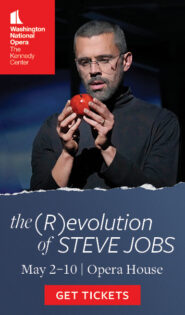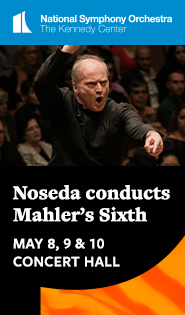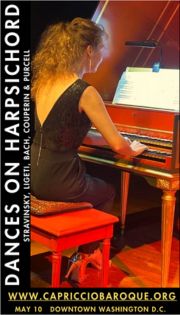WNO puts the grand back in grand opera with a powerful “Roméo et Juliette”
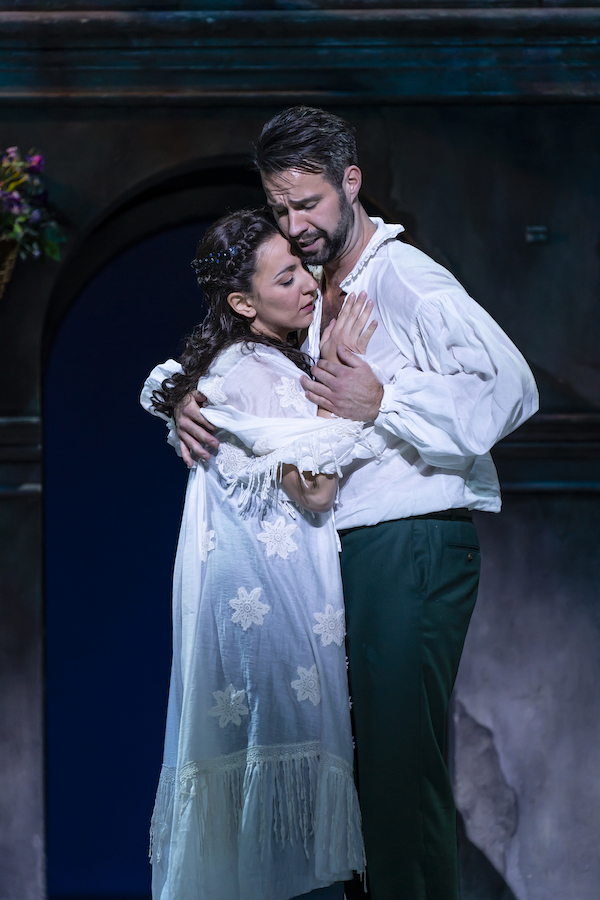
Rosa Feola and Adam Smith star in Gounod’s Roméo et Juliette at Washington National Opera. Photo: Scott Suchman
After last week’s disappointing world premiere of Grounded, Washington National Opera was in need of a hit. As of Saturday night, it has one in this colorful new production of Charles Gounod’s Roméo et Juliette, running in repertory in the Kennedy Center Opera House. With a near-perfect cast, this larger-than-life romantic grand opera is just what the doctor ordered.
Gounod’s opera premiered in Paris in 1867, and proved his second greatest success after Faust in 1859. The libretto by Jules Barbier and Michel Carré draws quite directly from Romeo and Juliet by William Shakespeare. This production, WNO’s first since 1997, is part of Shakespeare Everywhere, a festival celebrating the works of William Shakespeare throughout the Washington area.
Making a long-awaited WNO appearance as Juliette was Rosa Feola, whose scintillating Washington debut with Vocal Arts DC came shortly before the coronavirus closures in 2020. She displayed extraordinary scope, with her soprano plush and limpid across the dynamic range and from high to low. She transformed from a bratty coquette, with outstanding high Cs and D in the Act I Ariette (“Je veux vivre”), into a tragic soliloquist in “Dieu! quel frisson” in Act IV. Her radiant pianissimi impressed as much as her bolder, louder exploits.
Her Roméo, Adam Smith, made an equally remarkable company debut. With more raw wattage in vocal power and less refinement, the English tenor gave a performance marked by daring ease in the top range. He sang with endless strength, capable of delicate softness, especially matching with Feola on their four exquisite duets, but with no strain in the several high Bs of the Cavatina “Ah! lève-toi, soleil!”
The pair had striking chemistry starting in their Act I Madrigal, the duet based on Shakespeare’s sonnet scene, and through to their star-crossed end. It is a rare thing in opera—where the power and beauty of the voice are more important than physical appearance— to have two romantic leads who are young and beautiful together, as well as excellent singers. Both of them confidently climbed rungs on the sets up to the balcony, among other athletic feats.
Baritone Justin Austin, winner of this year’s Marian Anderson Vocal Award, brought a pliant, powerful top range to the role of Mercutio. His comic timing sparkled in the patter-rich ballade “Mab, la reine des mensonges,” and his acting skillfully demonstrated the character’s bravado. His tragic foil in male braggadocio, tenor Duke Kim, made an equally strutting and violent Tybalt. Both of them had the confident physical presence to make their fight choreography credible and exciting (fight and intimacy direction by Casey Kaleba).
Noteworthy company debuts ranged farther down the cast list as well. French bass Nicolas Testé brought a puissant, refined elder presence to the roles of Frère Laurent (oddly costumed as a bishop rather than a friar) and the Duke of Verona. In the comic role of Gertrude, Juliette’s nurse, mezzo-soprano Jill Grove stole many of her scenes with her belting low range and snappy comic timing. WNO Cafritz Young Artists filled out the comprimario roles, most notably mezzo-soprano Winona Martin’s smart-talking Stéphano, the trouser role of Roméo’s page, a playful ruffian in leather jacket who tagged the city square’s fountain with spray paint.
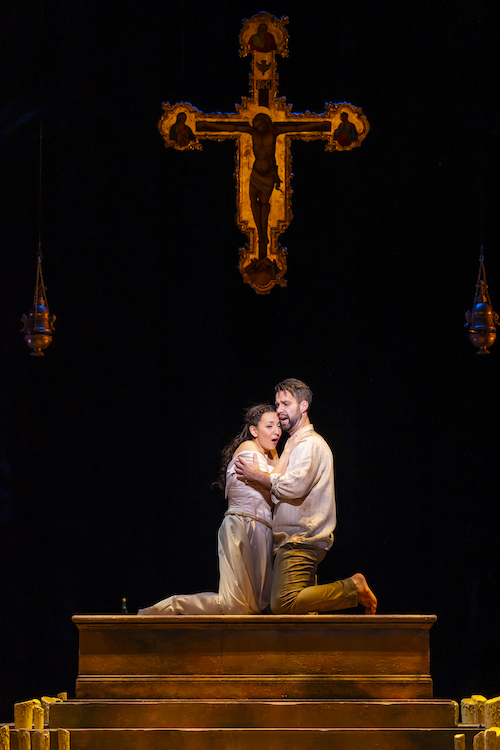
Photo: Scott Suchman
Evan Rogister, WNO’s principal conductor, led the Kennedy Center Opera House Orchestra with unaccustomed restraint in the first half (intermission came after the first scene of Act III). Kudos to the cello section, who played with exceptional warmth and balance in the music for 4-part divisi that returns a few times in the opera. The Andante for muted strings, soft winds, and harp that opened and closed Act II was also particularly lush.
The WNO Chorus, thoroughly prepared by Steven Gathman, stayed right with Rogister in their scenes, starting with the tense prologue just after the orchestral introduction to Act I. Sadly, Rogister’s conducting became more exaggerated and performative in the second half, leading to some misalignments between stage and pit.
Simon Godwin, the British-born artistic director of Wasington’s own Shakespeare Theatre Company since 2018, took on directing opera for the first time in this production, debuted last summer at the Glimmerglass Festival. He has updated the action to the mid-20th century with brightly colored 50s and 60s costumes (designed by Loren Shaw). Six dancers added more contemporary flavor to the crowd scenes, often interacting with the singers, with more modern styles of dance (choreography by Jonathan Goddard).
The modular set consisted mainly of various combinations of large, movable pieces forming neoclassical colonnades, arches, and staircases (set design by Daniel Soule). Scrims bearing video imagery enhanced the set design, often building on the set pieces that could be seen faintly behind it (projections designed by Blake Manns). Godwin did marvelous work in the acting direction, but he came up short in bringing some scenes to an end before the music had finished, in effect eliciting early applause from the audience.
The vast wealth of the Capulets came across in their circus-themed ball in Act I, complete with clowns and other sideshow costumes, a lighting array shaped like a big top tent, and a grand entrance for Juliette costumed with bird’s wings. A significant cut to the score, removing everything from Juliette’s Act IV aria to the entrance of Roméo into the tomb in Act V, reduced the run time to under 2-½ hours. While regrettable textually, this served to add dramatic power of the dénouement.
Roméo et Juliette runs through November 18, with WNO Cafritz Young Artists singing all the roles on November 17. kennedy-center.org
